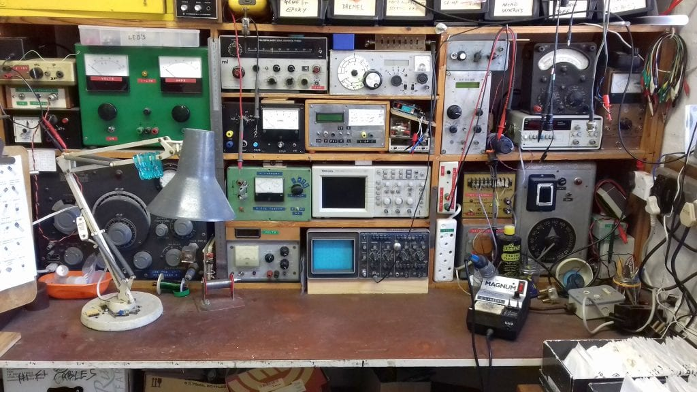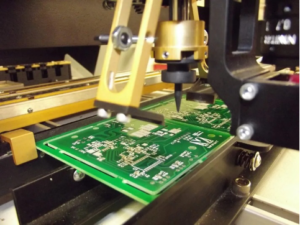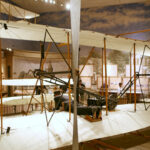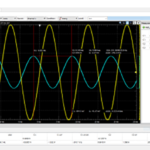Is there a shortage of hands-on technical professionals? Yes, no, maybe — or all of these?
It’s hard to prove with numbers, but it certainly seems as if fewer students and entry-level electrical/electronic engineers are doing hands-on projects in school or at the job. By hands-on, I mean projects which involve wire stripping and soldering wire, poking and probing with meters, oscilloscopes, spectrum analyzers, and more (Figure 1).

Even if they do it once for a required project, many students soon gravitate to hands-off engineering or what I call “keyboarding,” which includes coding, writing apps, programming algorithms, and things of the like. Meanwhile, a small group of analog, digital, thermal, mechanical, and other engineers is over in a corner somewhere else, designing, building, and debugging the real hardware on which the software will run.
Is this really happening, and is it good for progress and for society? I don’t know the answer to either question. Yes, there are a lot of very good “maker” and “hacker” activities out there, but I am not sure where they ultimately lead. The reality is that much of even professional design efforts have shifted away from creating your own to instead buying solutions, and it makes a lot of sense to do so in most cases.
Consider power sources and supplies: fewer engineers are doing their own these days or getting involved in the subtleties, minutia, and magic of their many topologies. The reason is simple: specialist vendors now offer ICs, modules, and open frame supplies with excellent performance, plus demonstration circuits that can be used almost “as is.” At the same time, designing and verifying anything larger than a low-power supply that will meet the many safety, regulatory, and efficiency mandates in addition to basic performance is very difficult.
On the other hand, I am not sure it’s good for engineering as a discipline and profession if increasingly fewer practitioners really understand what’s going on behind the curtain. It’s similar to relying on modeling and simulation programs: they are essential to design and verify, but you need confidence in the results, and that includes a way to independently cross-check the results via a basic sanity check.
What to do?
Some professions such as medicine address this problem with internships and clerkships which rotate through various departments or specialties. For engineering, an apprenticeship either during formal schooling or upon graduation as a first real job makes the difference between being an engineer who merely knows the principles (and perhaps has done a hands-on project along the way) and an engineer who has been involved in product design, debugging, and release to manufacturing (Figure 2).

There are many considerations for commercial design and production that are not as critical with a personal or school project:
The BOM
First, there’s the need for a highly detailed bill of materials, with as many parts as possible already on the approved list and vetted in terms of vendor credibility, ability to deliver, performance to spec, pricing, and other factors. The component performance subtleties and idiosyncrasies are also better understood.
Tolerances and variability
You can build one of something and tweak it so that it works, but what is the effect of component tolerances when it goes into volume production? As part of the design review, a team must look at the typical and even worst-case buildup of variations in parameters ranging from supply voltages to passive-component tolerance, as well as mechanical variability in factors such as component size and physical placement. It’s no fun when units in the pilot run won’t meet performance specs or when they can’t even be assembled properly.
Test and verification
How did you test the design to see if it met informal and formal specifications? How do you assess the validity of the tests and any equipment used?
Assembly drawings and production steps
These drawings and notes show all the parts on the PCB, how they are placed, and in what order — something especially needed if there are unusual parts (brackets, clips, special connectors) in addition to standard surface-mount or through-hole ICs and components. There are also assembly drawings for the entire product, showing how the PC board, enclosure, and any other subassemblies go together — and in what sequence.
Fixtures and jigs
These speed up assembly and ensure it is done properly. This may be needed for parts that must be aligned (electro-optical ones are a typical challenge), assemblies that have to be placed just right, and torques and tensions that have to be set correctly.
Tradeoffs
All designs involve balance among performance, power, and cost while keeping priorities in mind; there’s no news there. But when you are looking at going into a production mode, there are dimensions to the compromise puzzle that simply don’t exist when you just have to deliver a few working prototypes. A design review in front of the team is where you explain and may even defend these decisions.
Teamwork
Finally, there’s the aspect of learning to with other team members, suppressing egos, and being open to ideas. Equally important is appreciating the role of, and input from, other departments involved with the total project — that’s a huge education in itself.
Does it matter in the end?
The question of where there is an engineering or skills shortage is an ongoing one. I’ve heard the cries of “shortage” for many years, yet I have also seen rafts of engineers getting laid off when things turn down (and I am not referring to recent cutbacks of software-centric coders at Twitter, Google, Facebook, and others).
The question of how many students are in classic electrical engineering and its various sub-disciplines is hard to answer. I tried to get some meaningful numbers from various educational, government, and professional sources. Unfortunately, these sources use different terminology for similar roles as well as similar terminology for different roles; further, some lumped “computer science” in with “electrical engineering,” while others did not.
By one assessment, colleges in the United States awarded about 31,000 undergraduate EE degrees in 2017–2018 [3] but with a combined electrical plus electronic enrollment of about 78,000 (Figure 3, [5]) — a disparity that puts all the numbers in serious doubt. Adding to the confusion, “computer science” and “electrical/computer engineering” are called out by this source as additional disciplines as is biomedical engineering.

Looking at these numbers and others, I concluded there was no easy, unambiguous way to parse all these disciplines. Ultimately, I gave up, as I didn’t have the time or expertise to find and dig deeper into the various data sets.
The apparent shortfall in hands-on professional interest goes beyond bachelor-degree engineering. The number of students in electrician and plumber programs has been dropping [11 and 12], and I consider their curricula as rigorous, challenging, and reality-driven as many college-degree programs (have you looked at their licensing tests? They are brutal — and there’s also the thousands of apprentice hours required). Interestingly, white-collar apprenticeships are now very popular and oversubscribed for fields such as insurance [13].
Other professions such as accounting and dentistry are also seeing drops of 10 to 30% in incoming students over the last 10-20 years. Some of that may be due to a declining population in the critical age bracket, but a lot is likely not. My opinion — and it’s just an opinion — is that there is an aversion to getting hands dirty (literally or figuratively) and anyway, you can always become an “influencer.”
Maybe I am wrong. There is a lot of creative “maker” and Arduino-type activity going on in so many places, and much of it involves real circuits in addition to keyboarding; also, parts are easy to get online. (There’s those on-the-edge folks building high-voltage Tesla coils that are similar in their garages, but we won’t go there!)
Will our society suffer as fewer people know how to get real things done? Will it be some dystopian future where the knowledge of how to build and fix is, unwittingly, in the hands and minds of a few specialists who a) either rule society or b) perhaps live in a remote cave and are hard to find?
Check back in a few decades, or maybe sooner….
External references
[1] IEEE Power Engineering Society (2006), “Power Engineers Needed: what PES is doing to attract the talent.”
[2] Vancouver Island University (2020) “VIU Aims to Fill a Shortage of Power Engineers.”
[3] College Factual,“2022 Electrical Engineering Degree Guide.”
[4] “Electrical Engineering.”
[5] American Society for Engineering Education, “Engineering by the numbers.”
[6] Bureau of Labor Statistics, “What Electrical and Electronics Engineers Do.”
[7] National Science Foundation, “How many degrees are earned in engineering, and what subfields are most popular?”
[8] Zippia, Inc., “Electrical Engineer Demographics and Statistics In The US.”
[9] US Department of Education, National Center for Education Statistics,“Detail for CIP Code 14.4801: Energy Systems Engineering, General.”
[10] University of Michigan, “Electrical and Computer Engineering at Michigan: A History of People Powering Innovation.”
[11] The Wall Street Journal, “America Is Trying to Electrify. There Aren’t Enough Electricians.”
[12] The Wall Street Journal, “Generac’s Generator Sales Hurt by Lack of Installers”
[13] The Wall Street Journal, “More Students Are Turning Away From College and Toward Apprenticeships”
EE World Related Content
Have you considered resistance soldering? (Part 1)
Have you considered resistance soldering? Part 2
Basic instrumentation for the electronics workbench
Breadboards evolve to meet 21st-century design needs, Part 1: The “Ancient” Past
Breadboards evolve to meet 21st-century design needs, Part 2: Recent past and present
Breadboards evolve to meet 21st-century design needs, Part 3: The present and near future







Leave a Reply
You must be logged in to post a comment.